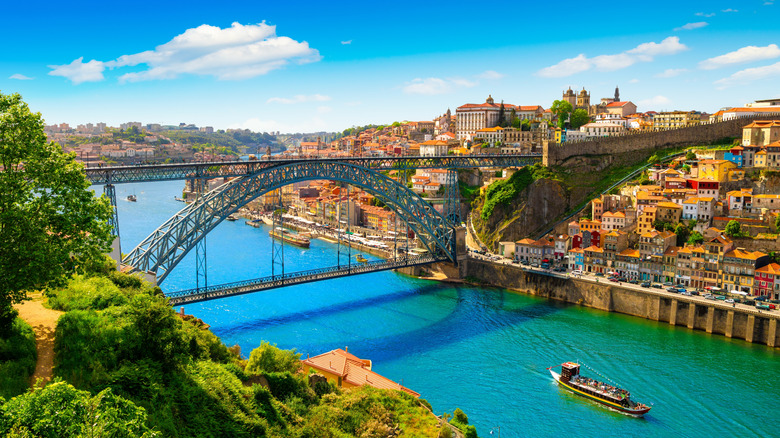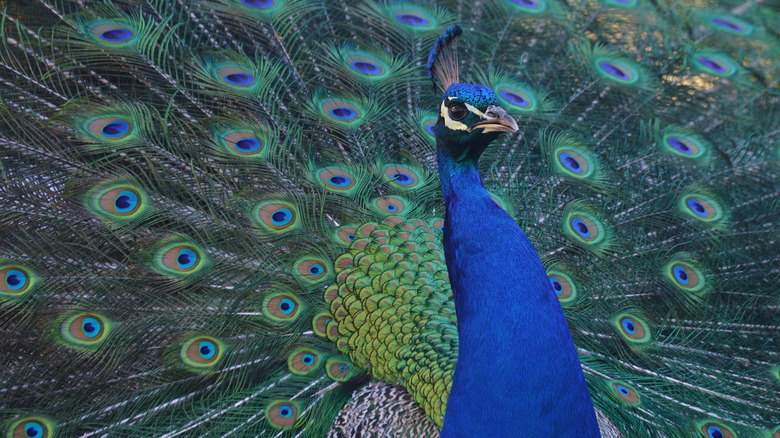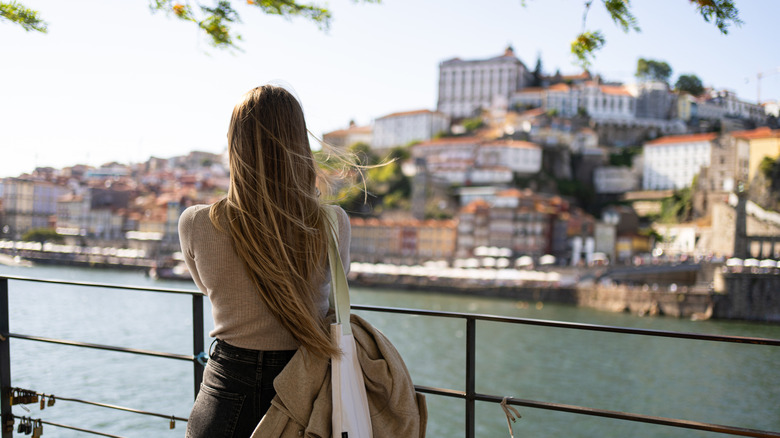Hidden In The Heart Of Porto Is Portugal's Peaceful Historic Garden With Strutting Peacocks And River Views
There are many good reasons to travel to Porto, often referred to as Portugal's "second city." Maybe you'd like to walk its UNESCO-recognized historic city center, admire the shoebox buildings with their terracotta roof tiles tumbling down to the banks of the Douro River, eat in one of its many Michelin-starred restaurants, peruse the stalls at one of Rick Steves' favorite markets in Europe, or drink port, the city's namesake wine, at source. It's also one of the cheapest city breaks in Western Europe, according to research by the U.K. Post Office, and is one of those European cities with fewer crowds that (again) Rick Steves says he prefers.
But when making your to-do list, you should also pencil in a visit to the Jardins do Palácio de Cristal, a 30-minute walk to the west of the Centro Histórico. Known in English as the "Crystal Palace Gardens," this bucolic stretch of greenery and shaded walkways has been one of Porto's finest relaxation spots since the mid-19th century, when it opened for the 1865 International Exhibition, a precursor to the World Expos of today. It's also free, and therefore suited to vacationers in Porto on a shoestring budget.
The palace, magnificent though it once was, no longer exists — it was demolished in the 1950s and replaced with a modernist, multipurpose sports venue that looks a bit like a UFO — but the gardens have retained their original grandeur, which is why they still attract tourists and locals to this day.
Scenery and nature at the Jardins do Palácio de Cristal
Porto is a famously hilly city and the gardens benefit from being constructed high up on the river banks, offering visitors wonderful views of the colorful cityscape and the broad mouth of the Douro as it flows into the Atlantic Ocean. When the weather is pleasant — likely, if you're here between May and September — the viewpoints and benches scattered throughout are idyllic places for an afternoon picnic.
Because of its peaceful setting, you'll want to take your time exploring the gardens — water features, stone sculptures, perfectly pruned shrubs, and flower beds work in harmony with the impressive river views. Some of the gardens have themes — the Garden of Aromatic Plants, the Garden of Medicinal Plants, the Garden of Twin Cities, the Garden of Feelings — and in among them you'll find a wide variety of flora, including evergreens like camelia and palm, and deciduous trees such Virginia tulip, maple, magnolia, and linden, which imbue the environment with different shades and textures as their leaves change color across the seasons.
People also visit the gardens to catch sight of one of its resident birds: the peacock. These regal creatures can be found strutting across the lawns or between the trees, though you may find them congregating near the Biblioteca Municipal Almeida Garett, the park's library, on sunny afternoons. Some visitors even report seeing peacocks everywhere, but if you want seek them out, listen out for their distinctive, echoey, high-pitched calls — and follow the noise.
What else to do at the Jardins do Palácio de Cristal?
There are also notable works of architecture in the gardens, including the small but prepossessing Charles Albert Chapel, dedicated to the exiled King Charles Albert of Sardinia (who died in 1849), and the spaceship-like building, known as Pavilhão Rosa Mota or the Super Bock Arena, that stands on the grounds of the old Crystal Palace. If the vantage points overlooking the River Douro weren't quite enough, you can scale the arena and walk around the top of the dome on a 20- or 45-minute tour, called Porto 360. From here, high above the city, you'll get one of the best views in Porto — but be sure to wrap up well in winter, as there's no hiding from the elements. And if you have time, you could also check out the Galeria Municipal de Porto, a free-to-enter contemporary art museum that opened on the grounds in 2001 and showcases the works of local and international multimedia artists.
Once you leave the gardens, if you plan on walking back towards the Centro Histórico, there are lots of cool museums and monuments on the way. The Museo Nacional Soares dos Reis is Portugal's oldest public museum, displaying ceramics and elegant glassware, as well as sculptures by the eponymous Portuguese artist, António Soares dos Reis. The Igrejo do Carmo, a magnificent 18th-cenutry Catholic church, is one of Porto's finest religious structures and sits just to the north of the Natural History Museum, which is also worth a visit. And to the south, near the banks of the Douro, you'll find one of Porto's top attractions, the Palácio da Bolsa (The Stock Exchange Palace), a fusion of Neoclassical architecture and Arabesque grandeur. It's not to be missed.


